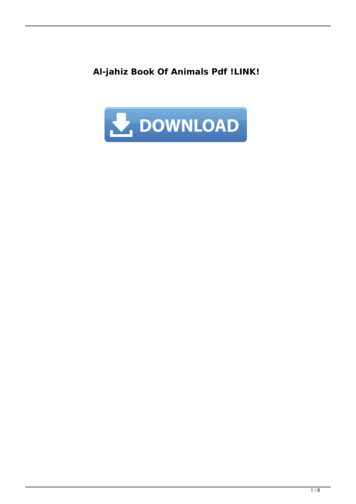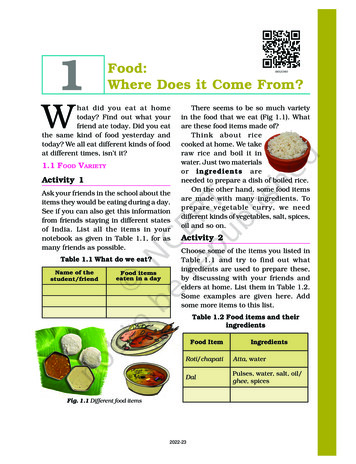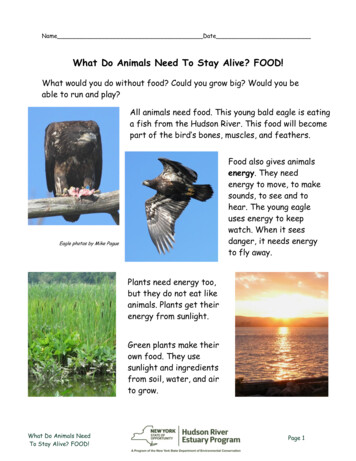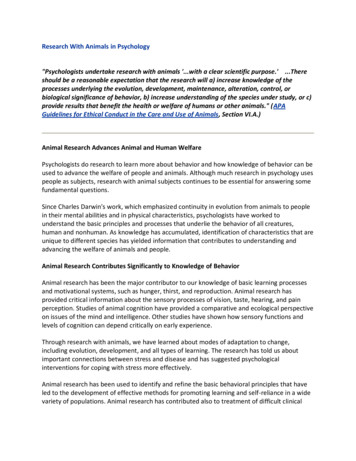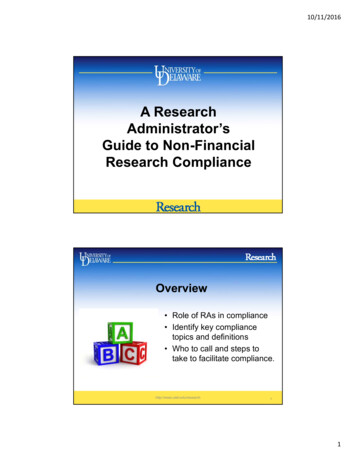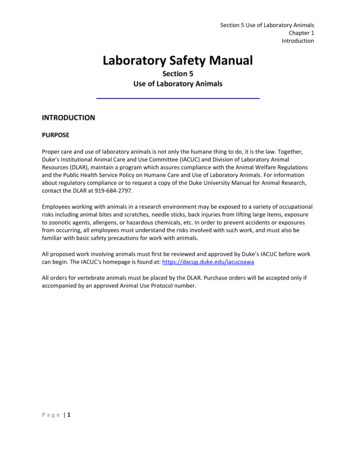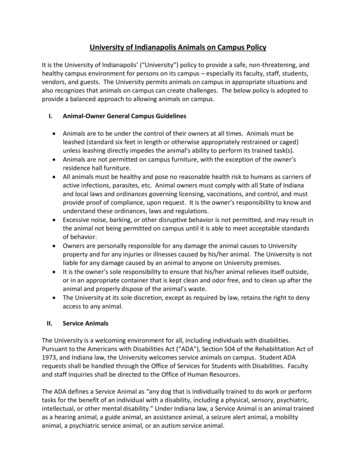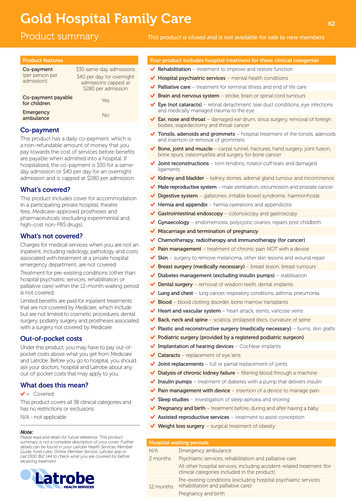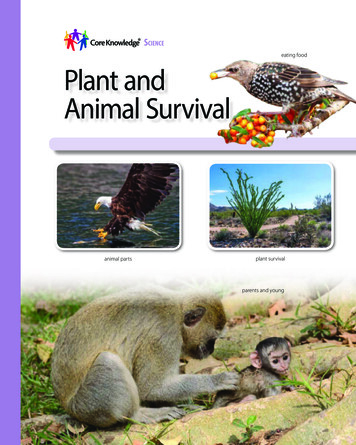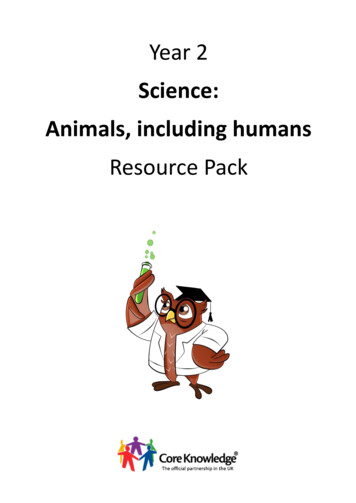
Transcription
Year 2Science:Animals, including humansResource Pack
Basic needsLiving things and their offspring The basic needs of animals, including humans, forsurvival (water, food, air)Keeping healthy Animals, including humans, have offspring which grow into adults. Recognise that offspring are verymuch, but not exactly, like their parents. Understand that most animal babiesneed to be fed and cared for by theirparentsCore Knowledge Free-sorting food into groups and explaining how/why they chose thosegroups(Classifying & Grouping) Sort food pictures into a food groupsScience Unit Overview– Year TwoAnimals, including humans The importance of exerciseThe importance of eating the rightamounts of different types of foodHygiene(Identifying)Matching parents and babies correctly(e.g. kitten — cat, tadpole — frog)Application of knowledge (Identifying)(Identifying, Classifying & Grouping) Compare and contrast baby animalsand their parents Order the stages in human life(baby toddler child teenager adult)Sort food groups into a food pyramidChildren with pets could talk to the class abouthow they care for them. Visit a zoo or farm and learn about howanimals are cared for in captivity. Explore what happens when animals basicneeds are not met Learn about how the RSPCA help to keepani-mals safe including the ‘five freedoms' Record a food-diary and evaluate theirdiet(Observing over time)Collect and present data aboutfavourite foods(Pattern seeking)Carousel around physical activitiesthinking about how the activities maketheir bodies feelTypes of scientific enquiry are in (italics)
Lesson 1: What do animals need?This lesson is the first in a series that teaches Year 2 children about ‘Animals, including Humans’. It builds on the Animals unit taught in Year 1. Thislesson recaps some of the learning from Year 1 when children learnt to identify animals from different groups including mammals, fish, amphibians,birds and reptiles – though they did not need to know these group names. Children have the chance to demonstrate what they have rememberedfrom Year 1, and learn about the basic needs of all animals.See page 261 in What Your Year 1 Child Needs To KnowLearning ObjectiveCore KnowledgeTo explore the basicneeds of animals,including humans All animals have 3 basicneeds for survival: water,food, air There are other thingswhich are also importantfor humans and animalsincluding shelter andbeing healthy.Activities for Learning Children to make a list of whatmakes them happy.Children to imagine they will bealone on a desert island for amonth. Discuss what they will needto survive.Children to imagine they were acertain animal – what would theirneeds be?Children could make different listsfor the needs of pets, farm animals,wild animalsChildren could choose, or be given,a picture of an animal. This couldbe stuck in the middle of the pageand then children can draw/writewhat it needs around the edge.Resources:Image library from the RSPCA for use with activities or on the whiteboard.RelatedVocabularysurvivesurvivalbasic needsEnsure childrenunderstand thedifferencebetween ‘needs’and ‘wants’.Assessment QuestionsWhat do humans needto survive?Why do you need food?Why do you needwater?What do animals needto survive?What would happen iftheir basic needs werenot met?
Date:L.O.: To explore the basic needs of animals, including humansWhat makes mehappy?What do I need?What does a petneed?What does a farm What does a wildanimal need?animal need?
Lesson 2: Animals and their offspringIn this lesson children learn about the stages of life for humans from being a baby to an adult. They compare these stages. They also learn about theoffspring of different animals and that we often have different names for the babies of animals. Depending on the prior knowledge of your children, you willbe able to learn more advanced vocabulary such as names of animals at different life stages.See page 263 in What Your Year 1 Child Needs To KnowLearningObjectiveTo be able todescribe animalsand their offspringCore Knowledge Activities for LearningAnimals, includinghumans, have offspringwhich grow into adults. Offspring are very much,but not exactly, like theirparents. Resources:Children to sort and name thestages in human life: baby toddler child teenager adultDiscuss differences betweenstages e.g What are thedifferences between toddlersand babies?Watch BBC video about babyanimals and discusssimilarities/differencesbetween babies and theirparents.Go over vocabulary of animalsand their babies.Matching parents to babiesBBC video about baby animalsAnimal pictures of parents and babies. You could make your own or download from the Twinkl website.Related VocabularyAssessment Questionskitten catpuppy dogduckling duckchick hen/chickencalf cowpiglet piglamb sheeptadpole frogcaterpillar pupa butterflyHow are you different froma toddler?Speaking frame:A baby is called a.grow up into.Ask children for the correctterms for the offspring of arange of animals.What is similar about akitten and a cat? What isdifferent?How do animals’ (includinghumans) needs change asthey grow up?
Lesson 3: What do we need to eat?In this lesson children learn about the five food groups and understand that each group has a different function in the body. Fruit and vegetables are asource of vitamins and minerals which are important for many functions in the body including having a healthy immune system. We are advised to have fiveportions of a variety of fruit and vegetables each day. Carbohydrates (starchy foods including potatoes, rice, pasta, bread) make up around a third ofeverything we eat. They are important for providing us with energy and fibre (if we choose whole-grain options, or leave the skin on potatoes). Protein(meat, fish, eggs, beans, nuts) is essential for growth and repair in the body. They also provide vitamins and minerals. Dairy products are also good sourcesof protein and they provide calcium which is important for healthy bones. Sweets and oils (fats and sugars) also provide energy but most people have toomuch of these which is unhealthy.See pages 306-7 in What Your Year 3 Child Needs To KnowLearningObjectiveTo be able tosort food intofood groupsCore Knowledge We need food tosurvive. Food can be sortedinto different groups. We need the rightamount of differenttypes of food to behealthy.Activities for Learning Children to free sort food into groups and discuss(bring in empty packaging and fruits/vegetables) –alternatively could use images of foods. Introduce the 5 food groups and explain thatscientists put food into these groups because theygive your body different things that it needs. Children to sort foods into the 5 groups. Introduce food pyramid to show we need differentamounts from each group. Children to put foods into the correct group andposition on food pyramid. Sing fruit and vegetables songResources:- Food packaging or pictures for sorting.- Vegetables and fruit song from Singup website.- Labelled pictures of food on TES website for sorting or using with food pyramid- NHS website on healthy eating (for teacher teinsweets & oilsfruits & vegetablesSpeaking frame:I put withbecauseAssessmentQuestionsWhy do we needfood?Why did you putin the same group as?Can we eat food fromonly one group?Why/why not?Which food groupdoes pizza go into?
Date:L.O.: To be able to sort food into food groupsSWEETS & OILSDAIRYPROTEINFRUITS & VEGETABLESCARBOHYDRATES
Lesson 4: Do you eat healthily?In this lesson children develop their understanding of a healthy diet further by thinking about what they eat, and whether they are getting enough from eachfood group.See pages 306-7 in What Your Year 3 Child Needs To KnowLearning ObjectiveTo understand whateating healthily meansCore Knowledge Activities for LearningFood can be sorted intodifferent groups. We need the right amount ofdifferent types of food to behealthy. Resources:Sesame Street resources on healthy eatingChildren to vote which foodgroups different foods belongto.Children to keep a food diaryChildren can convert the fooddiary into a tally chart on afood pyramid and then discusswhether they ate healthily ornot.Cross-curricular with maths:children could do a survey oftheir class’s favourite foodsand present the data in a tallychart, and then a block eets & oilsfruits &vegetablesbalancedportionsAssessmentQuestionsDo you eat healthily?What do you need toeat more of?What do you need toeat less of?Which is the class’sfavourite food?Which is the leastpopular?How many morepeople liked than?
Lesson 5: Why is exercise important?This lesson gives the children the opportunity to think more scientifically about the effects of exercise on the body. The children will carry out arange of physical activities and discuss how they make them feel with a view to understanding why they benefit the body. Regular exercise isimportant and the NHS recommends that children under 18 do an hour of aerobic activity every day – this can include moderate and vigorousintensity activities. For more information, see the NHS website. It is important for children to learn that this level of exercise is important forstrengthening their bones and muscles (including their heart).See page 265 of What Your Year 1 Child Needs To KnowLearning ObjectiveTo know we need toexercise to be healthyCore KnowledgeActivities for Learning Humans need toexercise in order tobe healthy.- Discussion about why warming up beforeexercise is important (so we are ready forexercise, and we do not injure ourselves).- Extension: Discussion about how and why beinga professional athlete would affect what youwould need to eat. Analogy: If you want a carto drive a long way, it needs more petrol than ifyou are going a short way.- Children to carousel around different physicalactivities (skipping, star jumps, running on thespot, hopping on the spot, bouncing abasketball, stretching) and answer questions inpairs:What activity did you do?Which parts of your body was it exercising?How did you feel afterwards? Exercise makes yourmuscles (includingyour heart) and yourbones stronger. Exercise can makeyou happierResources:- NHS Change4Life resources including active games which could be used instead of the chwarm-uphealthySpeaking frames:I just didI was exercisingmyAfterwards I feltAssessmentQuestionsWhy is exerciseimportant forkeeping healthy?What kinds ofexercise do you enjoydoing?What exercise canyou do outsideschool?
Speaking frame: A baby _ is called a _. _ grow up into _. How are you different from a toddler? What is similar about a kitten and a cat? What is different? How do animals' (including humans) needs change as they grow up? Ask children for the correct terms for the offspring of a range of animals. Resources: BBC : video about baby animals Animal pictures of parents and babies. You .
